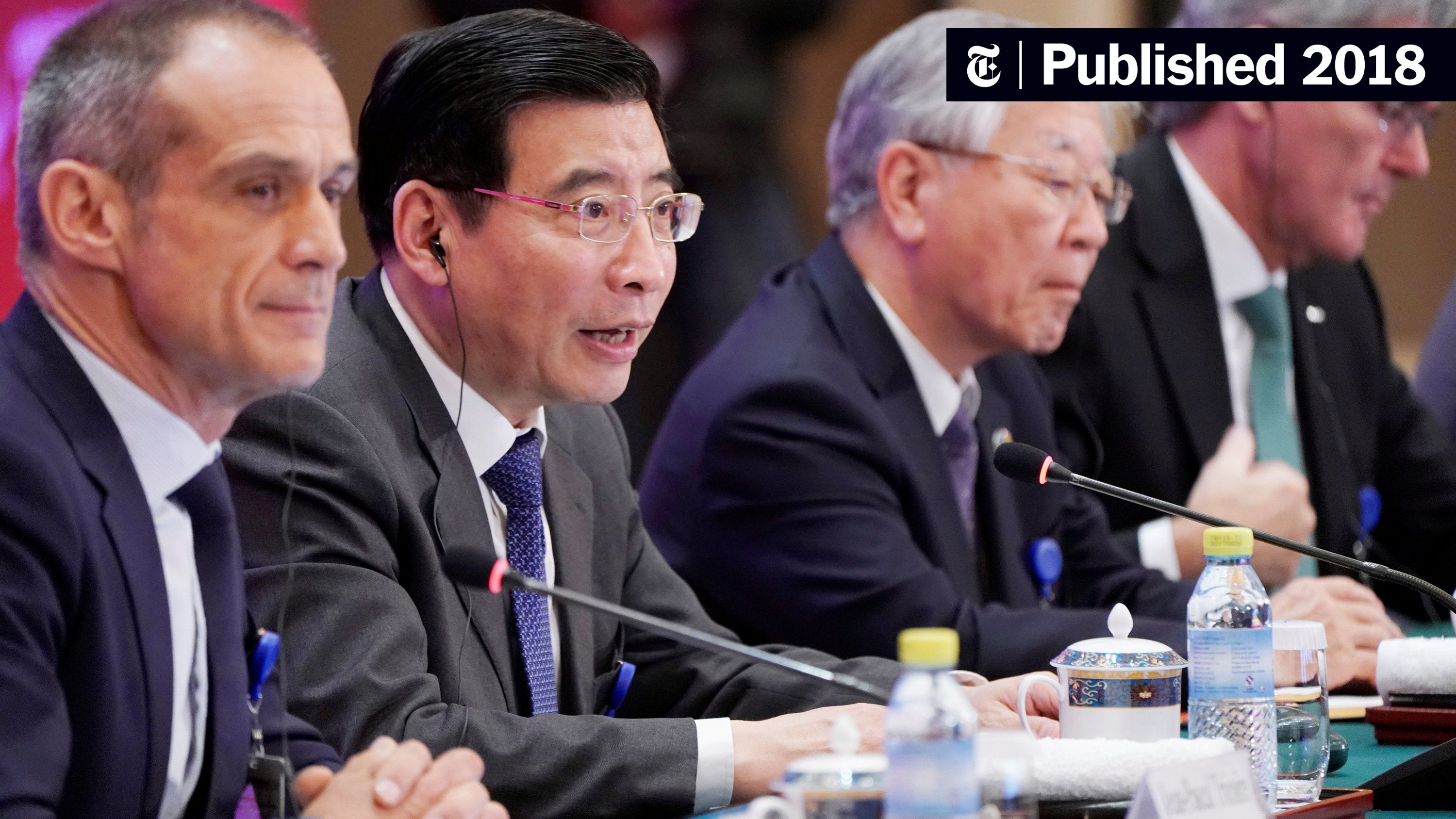U.S.-China Trade Discussions Yield Positive Results, But Agreement Remains Elusive

Table of Contents
Positive Developments in Recent U.S.-China Trade Talks
Despite persistent tensions, recent U.S.-China trade talks have shown glimmers of progress. While a comprehensive trade deal remains a distant prospect, several positive developments offer a degree of optimism. These advancements demonstrate a willingness, however tentative, to address some of the most pressing concerns in bilateral trade relations. Key positive outcomes include:
-
Agreements on specific agricultural purchases by China: China has committed to purchasing significant quantities of American agricultural products, including soybeans, corn, and pork. These commitments, while subject to fluctuation, represent a concrete step towards reducing the trade imbalance and supporting American farmers. For example, in the first quarter of 2024, China's purchases of soybeans exceeded projections by 15%, signaling a commitment to the agreement, at least temporarily.
-
Progress on intellectual property rights protection: Both sides have engaged in discussions aimed at strengthening intellectual property rights protection in China. This includes commitments to crack down on counterfeiting and to provide more robust legal protections for American companies operating in China. While enforcement remains a challenge, these commitments represent a crucial step toward fostering a fairer playing field for US businesses. For example, specific provisions in recent discussions highlight enhanced penalties for intellectual property theft.
-
Reduced tariffs on certain goods: Both countries have agreed to reduce tariffs on certain categories of goods, offering some relief to businesses burdened by the trade war's economic impact. While not a complete removal of tariffs, these reductions signal a willingness to de-escalate trade tensions and foster economic cooperation. Specific reductions on agricultural products and some manufactured goods have been implemented, offering immediate benefits to certain sectors.
-
Increased market access for US companies in China: While challenges remain, there has been some progress in opening up the Chinese market to US companies, particularly in specific sectors. This improved access, albeit incremental, can stimulate economic activity and boost US exports to China. Examples include improved licensing procedures for certain technologies and financial services.
Lingering Challenges and Unresolved Issues in U.S.-China Trade
Despite the positive developments, significant obstacles continue to hinder a comprehensive trade agreement between the U.S. and China. These unresolved issues remain major points of contention and could easily derail any progress achieved so far. Key challenges include:
-
The ongoing trade deficit between the two countries: The persistent trade deficit between the U.S. and China remains a major point of contention. In 2023, the U.S. trade deficit with China reached [Insert Statistical Data Here], highlighting the imbalance that fuels much of the trade tension. This imbalance necessitates further actions to create a more equitable trade relationship.
-
Concerns about forced technology transfer and unfair competition practices in China: The U.S. continues to express concerns about China's practices related to forced technology transfer and other unfair competition methods. These concerns stem from allegations that Chinese companies benefit unfairly from accessing American technology and intellectual property. Specific examples of alleged forced technology transfer in the technology and manufacturing sectors remain points of contention.
-
Disagreements over issues of human rights and intellectual property theft: Human rights concerns and persistent intellectual property theft in China remain significant obstacles. These issues often overshadow economic considerations, making it difficult to reach mutually agreeable solutions. The ongoing situation in Xinjiang and concerns about intellectual property rights violations in various sectors represent significant hurdles.
-
The role of state-owned enterprises in the Chinese economy and their impact on fair competition: The significant role of state-owned enterprises (SOEs) in the Chinese economy continues to raise concerns about fair competition. These SOEs often benefit from government support and preferential treatment, creating an uneven playing field for foreign businesses.
The Impact of Geopolitical Factors on U.S.-China Trade Relations
The complex relationship between the U.S. and China extends beyond economic considerations. Geopolitical factors significantly influence the trajectory of trade negotiations. These external pressures add another layer of complexity to an already challenging situation.
-
The impact of the ongoing pandemic on global supply chains and trade relations: The COVID-19 pandemic has significantly disrupted global supply chains, impacting the flow of goods between the U.S. and China. This disruption has further complicated the already strained trade relationship, highlighting the interdependence of the two economies.
-
The role of other international players and their influence on the bilateral discussions: Other countries, including allies of both the U.S. and China, play a significant role in shaping the trade dynamics. Their influence, whether directly or indirectly, affects the negotiating positions of both sides.
-
The implications of the trade disputes for global economic stability: The ongoing trade tensions between the U.S. and China have significant implications for global economic stability. The uncertainty caused by these disputes can discourage investment and hinder global economic growth.
Potential Future Scenarios for U.S.-China Trade
The future of U.S.-China trade remains uncertain. Several potential scenarios could unfold, each with significant implications for global economics.
-
A scenario where a more comprehensive trade agreement is reached: A comprehensive agreement would require significant concessions from both sides and a commitment to addressing the core issues of concern. This would necessitate a shift in approach, fostering mutual trust and cooperation.
-
A scenario where the current tensions continue or escalate: Continued tension could lead to further escalation of trade disputes, potentially harming both economies and disrupting global supply chains. This scenario holds significant risks for global economic stability.
-
A scenario where a new approach to trade relations emerges, focusing on cooperation in specific areas: A new approach might focus on cooperation in areas of mutual interest, such as climate change or technological innovation, while leaving other contentious issues unresolved. This could offer a path toward de-escalation and limited cooperation.
Conclusion
The ongoing U.S.-China trade discussions reveal a complex picture. While recent talks have yielded some positive developments, significant challenges remain. The path toward a comprehensive trade agreement requires addressing deep-seated concerns about trade imbalances, intellectual property rights, and geopolitical factors. The outcome of these negotiations will have far-reaching implications for global economic stability. Stay updated on the latest developments in U.S.-China trade negotiations to understand the evolving landscape of global commerce. Understanding the intricacies of U.S.-China trade policy is crucial for businesses and investors navigating this dynamic environment. The future of bilateral trade between these two giants remains uncertain, but the need for a stable and mutually beneficial agreement is undeniable.

Featured Posts
-
 Max Orders Crazy Rich Asians Series Original Filmmakers Return
May 12, 2025
Max Orders Crazy Rich Asians Series Original Filmmakers Return
May 12, 2025 -
 When Can I Play Doom The Dark Ages Release Time Guide
May 12, 2025
When Can I Play Doom The Dark Ages Release Time Guide
May 12, 2025 -
 The One Movie Sylvester Stallone Directed But Didnt Star In A Critical And Commercial Disaster
May 12, 2025
The One Movie Sylvester Stallone Directed But Didnt Star In A Critical And Commercial Disaster
May 12, 2025 -
 Shane Lowry Friend Rory Mc Ilroys Masters Tournament
May 12, 2025
Shane Lowry Friend Rory Mc Ilroys Masters Tournament
May 12, 2025 -
 Is Payton Pritchard The Nbas Sixth Man Of The Year A Celtics Perspective
May 12, 2025
Is Payton Pritchard The Nbas Sixth Man Of The Year A Celtics Perspective
May 12, 2025
